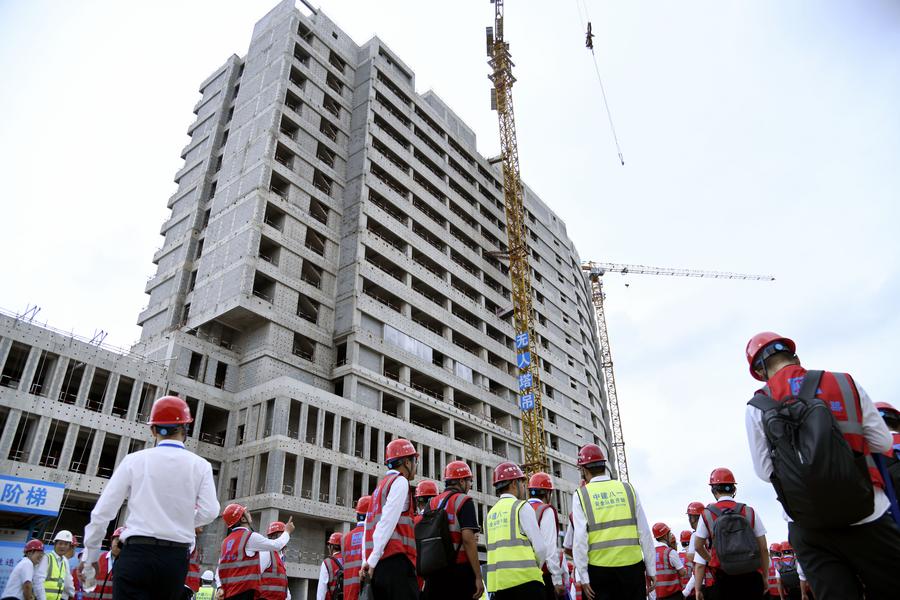
BEIJING - China's property market showed further signs of stabilization in June, with home price declines continuing to narrow and housing inventory falling for a fourth straight month.
In the four first-tier cities, namely, Beijing, Shanghai, Guangzhou and Shenzhen, new home prices dropped 1.4 percent from a year earlier in June, with the pace of decline narrowing by 0.3 percentage points from May, data from the National Bureau of Statistics (NBS) showed Tuesday.
Notably, Shanghai, the country's economic hub, recorded a 6 percent year-on-year increase in new home prices last month, the NBS said.
ALSO READ: China's GDP expands 5.3% year-on-year in H1
Second and third-tier cities saw new home prices fall by 3 percent and 4.6 percent year on year in June, with the declines narrowing by 0.5 and 0.3 percentage points, respectively.
Tuesday's data also showed that the total floor area of unsold commercial housing nationwide dropped by 4.79 million square meters at the end of June compared with the end of May, marking the fourth consecutive month of decline.
The latest figures reinforce signs of recovery in the property sector, as local authorities implemented city-specific measures to support the real estate market.
READ MORE: Sovereign wealth funds ramping up allocation to Chinese assets
"While the property market experienced some fluctuations in the first half of the year, it has generally been moving toward stabilization," said Sheng Laiyun, deputy head of the NBS, at a press conference on Tuesday.
Sheng highlighted several positive trends, including improved market sales, narrowing price declines, improved funding channels for the sector, and a continued drop in unsold housing stock.
In the first half of the year, sales of newly built commercial housing fell 3.5 percent by floor area, narrowing by 15.5 percentage points from a year earlier. The total sales value dropped 5.5 percent, with the rate of decline narrowing by an even wider margin of 19.5 percentage points.
READ MORE: Urban renewal calls for diversified funding sources
"Property transactions remained relatively active, particularly in the second-hand market, where sales volume increased year on year," Sheng said.
Supported by the "white list" mechanism and improved sales, property firms made steady progress in debt reduction in the first half, Sheng added.
In the first half of the year, the decline in funds raised by developers narrowed by 16.4 percentage points year on year. Notably, domestic loans to developers rose 0.6 percent year on year, reversing a drop of around 6 percent last year.
"Efforts to reduce housing inventory have also delivered positive results," Sheng said, citing the ongoing decline in unsold properties.
However, Sheng cautioned that both the sales area and value of commercial housing continue to decline. "The sector's bottoming-out process takes time, and it is normal for key indicators to fluctuate during this phase of adjustment and transition," Sheng said.
Looking ahead, Sheng added that more vigorous efforts are needed to curb the downturn and stabilize the property market.


